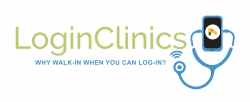LoginClinics: Jaclyn Qualter, MS, NP, A-CTTP
Jaclyn Qualter, MS, NP, A-CTTP

Email jaclyn@loginclinics.com
-Concierge medical services
-House calls
-Testing
-Physical Exams
-On site lab
-Mental health referrals
-Walk-in medical services
Given this dismal state of affairs, federal and state governments have enacted standards and laws to attempt to control and contain rising healthcare costs; but despite these efforts, the climb continues. In 1960 the US spent 5% of it’s gross domestic product (GDP) on healthcare. Compare this with today’s estimation: 17.9%. That’s 3.5 trillion dollars of the nation’s GDP entirely on healthcare.3 Since 1980, the US has been spending more dollars on healthcare at a faster rate than any other country in the world.4 In 2014, the Affordable Care Act was passed expanding Medicaid coverage and establishing Healthcare.gov, an online platform the public can access to compare and purchase healthcare plans.1 The ACA has brought more Americans healthcare coverage but it has not stopped the rising cost of care and despite its demands, the number of uninsured Americans continues to grow since it’s enactment.
Small business owners and small business employees are typically subject to high costs as they are often relegated to purchase high-deductible health plans (HDHP), among other constraints. According to Kaiser Permanente, the average insurance premium for a single person is about $5,000 per year, and for a family, $15,000 per year. 6 That’s $700 per month, on average, just to hold a membership insurance card in your hand. On top of this monthly membership premium, a yearly deductible is required. A deductible is a set amount of money the member has to pay out of pocket before the insurance company will start paying the portion of the contracted rate. Along with the ACA came an IRS cap on deductible maximums. For 2019, a single person’s deductible is capped at $6,750/year and a family at $13,500.7 If you and your family are healthy, and have a high deductible plan you could spend about $12,000 for the year just to be a member of the plan. Then, you would payout at 100% of the contracted rate for any medical services you use until you reach the yearly deductible of $13,500 THEN the insurance plan will start to pay a portion of your medical expenses. That’s a grand total of $25,500 per year you would have to pay prior to any insurance reimbursement or coverage.
To confound this situation and it’s complexity, we need to note that most healthcare institutions – small and large- have different fee schedules for the uninsured than they do the insured. From my experience as a healthcare provider and consumer, most healthcare institutions offer up to 50% off the cost billed to insurance to the uninsured for that same service. This means that a basic medical visit for someone with insurance will cost about $200-300 and for someone without insurance, about $150.
Then, there are prescription drugs. Prescription drugs are the most utilized health insurance benefit. Dramatically more than doctor visits.9 prescription drug prices are variable at different pharmacies with and without a pharmacy coupon. Using GoodRx, lisinopril, a common blood pressure medication is $10 at WalMart and $20 at CVS. Atorvastatin (generic Lipitor) is $6 at Kroger and $45 at Walgreens.8 Also, most pharmacies have a free and reduced drug list price. Wal-Mart, for example, has a $4 prescription drug list that includes glipizide (generic Glucotrol), simvastatin (generic Zocor), amlodipine (generic Norvasc), bupropion (generic Wellbutrin) and escitalopram (generic Lexapro). These price differences between drugs and lack of true cost visibility to consumers are driven by “by a complex, opaque third-party payment system for prescriptions… [there are] huge rebates and discounts drug companies give to multiple parties involved in distributing their products.”9
For far too long health insurance companies and big pharma- not consumers – have been driving the cost and hiding the price of medical care. Working Americans are confused, bewildered and paying more of their hard-earned monies than they should be. A price tag in on everything we purchase, so why isn’t it on our medical care? Why does the insurance company tells us how much it is going to pay and then refuse to cover certain medications and procedures after we pay them $15,000 a year to be part of their club?
The staff at LoginClinics understands first-hand the frustration with this system and the consequences and risk taken from not having health insurance. Because of this, we provide direct to consumer online medical care and counseling and omit “big brother”. Our fee schedule is conservative and freely available. Appointments are listed on our website and are easy to view and secure. Our providers offer concierge services for a flat monthly fee so you can easily access a medical professional when you need it most, either in writing, on the phone or via “FaceTime”. Our price list is given up front so there aren’t any surprise bills months later and our fee schedule does not discriminate against you if you carry health insurance. Quality and affordable healthcare and counseling for all North Carolina residents.
LoginClinics… Why walk-in when you can log-in?
406 US 1 Hwy, Suite A
Youngsville
NC
27596
Chapter: Wake Forest; Category: HealthCare: NP



